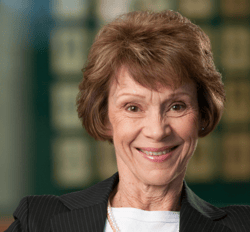
Written by Dr. Bonnie Knutson
If demographics aren’t the key, what is? The answer is emotions. This truism was brought front and center in an online report from Brand Keys.[i] The article points out what good marketers instinctively know: People buy with their heart and justify with their head. As noted neurologist Donald Caine said: The essential difference between emotion and reason is that emotion leads to action while reason leads to conclusions.”
It is increasingly being acknowledged that people respond more to emotional marketing than to rational information when deciding what to buy or where to buy it. Think about memorable Super bowl commercials that moved people throughout the years. Coca Cola’s Mean Joe Green. Budweiser’s Clydesdale Horses. Or the 2018 Dorito’s Blaze commercial with Morgan Freeman.
The article also cites a striking shift in the results of two surveys to determine what drives consumer decision-making. In the initial 2001 study, results showed that the ratio of emotional to rational influence was about 60:40. Fifteen years later, the study was replicated, finding that there was a marked shift towards the emotional influence from the rational side, changing the ratio to 75:25. While the heart ruled in both, the second survey clearly shows that you can’t move people with information alone. You need emotion.
I remember reading an article in Time Magazine about how marketers study the electro-functioning of the brain. They want to figure out how they can better tap into consumers’ emotions. In a blind taste test for two competing soft drink brands, consumers rated both products about equal. When shown the brand logos, however, one brand absolutely creamed the other. Areas of the frontal lobe – where primordial feelings and passions are generated -- went crazy when the consumers were shown the brand logos. Now, it is a cinch that both companies spent a lot of money creating their brand image. The difference is that the “successful” soft drink brand developed a message and product that hit the primitive part of the consumer’s brain better than did the “losing” soft drink.
Top brands know how to successfully capitalize on emotion in order to attract customers and develop brand loyalty. They do this by creating authentic emotional connections that are aimed straight at consumers’ frontal lobes, tapping into the powerful emotions about image, fantasies, aspirations, and dreams. Perhaps the most successful example of emotional marketing, however, invaded our psyche on television. After all, we all wanted to have a drink at Cheers, “where everybody knows your name.”
We all need to follow Richard Branson mantra: “The idea that business is just a numbers affair has always struck me as preposterous. For one thing, I have never been particularly good at numbers, but I think I have done a reasonable job with feelings. And I’m convinced that it is feelings – and feelings alone – that account for the success of the Virgin brand in all of its myriad forms.”
Your bottom line will thank you.
[i] Admap “Defining Audiences in the Fast Casual Category,”
Who Leads Your Customer’s Experience?
For
Michigan Business Network Blog
Bonnie J. Knutson, PhD
Michigan State University
Word Count = 668
----------------------------------------------------------------------------------------------------------------
Who in your business should be responsible for your customer’s experience? When I ask managers and owners this question, the standard response is, “We all are.” That is true. Everyone in the company has a vital role to play in delivering a top-notch experience to each person who walks in the door, calls on the phone, or visits your website. But who is the experience cheerleader? Who is the chief architect for the totality of that experience? Just as how the definition of experience varies, so does the person responsible for leading the guest strategy.
A report from Prophet (www.Prophet.com) highlights the fact that this responsibility differs from business to business. The most common choice, however, is the Chief Marketing Officer because the “experience is increasingly the primary way in which a brand is made real…across the entire journey.” The report further points out that delivering on a brand’s promise is really about alignment. The vision may come from the top, but it has to be delivered by everyone in the organization across all segments and throughout every layer. So your experience cheerleader has to [1] make sure that he/she has a clear vision of both the brand and the customer’s value proposition, [2] be able to identify all the important touch points that people have throughout their customer journey, [3] have the skills to influence others within the company – either formally or informally – so that everyone and everything is aligned to deliver the brand promise, and [4] be responsible for collecting and analyzing all customer experience metrics and then connecting them to your overall brand strategy.
Forrester’s Customer Experience Index found that 73% of businesses say that improving the customer experience is a priority, yet only 1% are actually giving that excellent experience. Talk about a disconnect! If this were your company, where would you start improving? The answer is simply to begin by measuring key customer experience metrics. For as the old saying goes, you can’t manage what you can’t measure. It is here, where managing the consumer experience can get tricky. There are so much data available, what metrics will give you the biggest bang for your buck? While the answer to this question will surely vary depending on the size and complexity of each business, there are several basic measures that will give you a good overview of your customer’s experience level. The first is your Ambassador Score. – how many of your customers will recommend your brand to friend or family vs. how many wouldn’t. Second is an Effort Score which measures how easy or difficult it is for the consumer to connect with your business. This score is gaining in importance because convenience is growing as a major factor in purchase behavior. Third is the infamous CSAT (Customer Satisfaction) Score, which measure satisfaction with individual experiences. But this score is only a snapshot in time. It assesses one encounter by one person at one time. What you are most interested in, however, is the overall Guest Satisfaction Score, because that is a cumulative measure that evolves over many experiences with your company. While there are a host of metrics that you can have, these four will start you well on your way down Peter Drucker’s path of managing what you can measure.
President Harry Truman had a sign on his desk that read ”The buck stops here.” It is the same with your business. The buck for monitoring and managing the customer’s experience has to stop on someone’s desk. While it is true that ensuring that each customer has a great experience is everyone’s business, it still takes a cheerleader to make sure every employee in every level is trained and empowered to make sure each touchpoint is customer-centric.
It is no surprise that businesses that invest in consistently delivering a great experience enjoy greater loyalty, higher revenues, better brand equity/value, more growth, and lower employee turnover. And measuring is the first step to achieving this goal.
Your bottom line will thank you!













